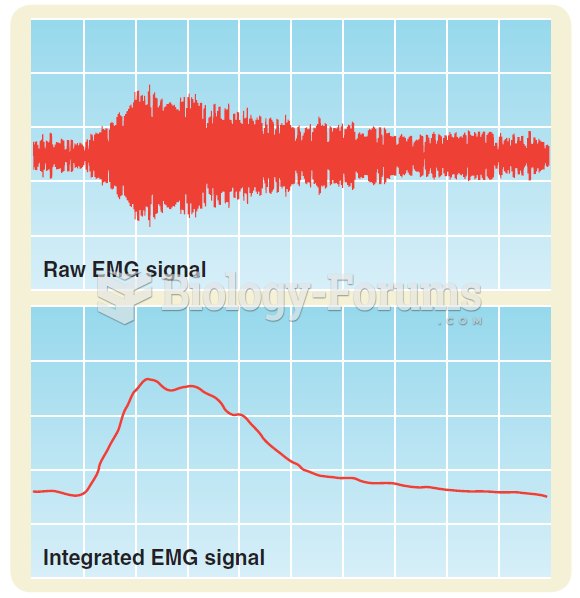This topic contains a solution. Click here to go to the answer
|
|
|
Did you know?
Studies show that systolic blood pressure can be significantly lowered by taking statins. In fact, the higher the patient's baseline blood pressure, the greater the effect of statins on his or her blood pressure.
Did you know?
Increased intake of vitamin D has been shown to reduce fractures up to 25% in older people.
Did you know?
Human kidneys will clean about 1 million gallons of blood in an average lifetime.
Did you know?
Aspirin is the most widely used drug in the world. It has even been recognized as such by the Guinness Book of World Records.
Did you know?
Pubic lice (crabs) are usually spread through sexual contact. You cannot catch them by using a public toilet.
 The relation between a raw EMG signal and its integrated version. The volunteer tensed her muscle ...
The relation between a raw EMG signal and its integrated version. The volunteer tensed her muscle ...
 Apply stripping effleurage with the thumb to the flexor and extensor muscles of the forearm. Apply ...
Apply stripping effleurage with the thumb to the flexor and extensor muscles of the forearm. Apply ...





